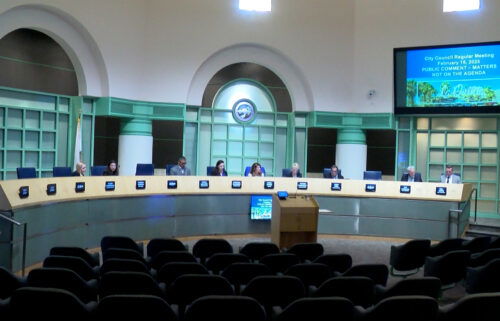Summer Energy-Saving Tips

By taking the actions below, you will help protect the environment, maintain the electrical grid and save energy costs.
Residential
- Avoid using major appliances like washers, dryers, dishwashers, pool pumps, charging of electric vehicles and applicable industrial equipment, etc., between the hours of 3-9 p.m.
- Set your thermostat to 78 degrees or higher when you are home.
- Use a ceiling fan to cool off for less. However, be sure to turn fans off when you leave a room — they only cool people, not spaces.
- Block the sun from overheating your home. Inside, use shades, blinds and drapes. Outside, use awnings, trees and shrubs.
- Plug electronics into a power strip, then turn the strip off when not in use.
- Use the power management settings on computers and monitors.
- Replace your five most-used light fixtures and/or bulbs with ENERGY STAR® products.
- Change or clean your air conditioner’s filter at least once a month to keep your system running at peak performance.
- Check for household leaks to make sure air is not escaping.
- Unplug that second fridge located in the hot garage or utility room. IID will pick it up and pay you $50 to recycle it for you. Sign-up here for IID's Refrigerator Recycling Program.
- Choose energy-efficient appliances. They don’t just save you money, but they’re good for the environment, too.
- Avoid over-drying your clothes. It wastes energy, plus causes static and wrinkling.
- Set your dishwashers on economy mode, to use less water and electricity.
- Pull the plug on chargers that aren’t in use.
- Download the IID Connect app for more energy saving tips.
Non-Residential
- Review above-listed tips for residential energy users to determine which may apply to your business.
- Choose energy efficient equipment. Check IID’s Energy Rewards Program for rebate information.
- Turn off air conditioning in unoccupied areas. Conditioning air in storage, basement or empty space is usually unnecessary.
- Install and program thermostats to power down or raise temperature after closing.
- Install motion detectors to control lighting in frequently unoccupied areas, such as restrooms, conference rooms or storage rooms.
- Activate computers’ sleep mode. This reduces electricity consumption to about less than 5 percent of full power.
- Plan meetings during peak periods to minimize use of equipment.
- Adjust schedule or shifts so that increased production occur before or after peak hours.
- Regularly clean and perform maintenance on HVAC units and all energy-intensive equipment to keep it operating efficiently.
- Replace incandescent or halogen lamps with low wattage or higher efficiency lamps.
Looking for more ways to save, see below.
Do It Yourself Energy Assessment
- Check the insulation in your attic, exterior and basement walls, ceilings, floors and crawl spaces. To determine the recommended insulation R-values in different parts of your home, visit the Weatherize section of energysaver.gov.
- Check for air leaks around your walls, ceilings, windows, doors, lighting and plumbing fixtures, switches and electrical outlets.
- Make sure your appliances and heating and cooling systems are properly maintained. Check your owner’s manuals for the recommended maintenance.



